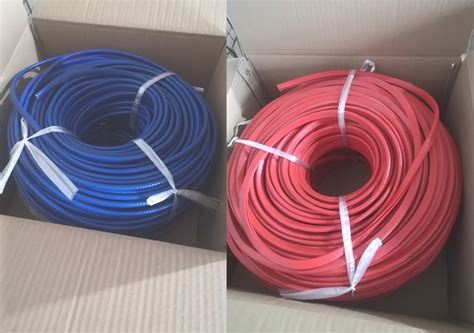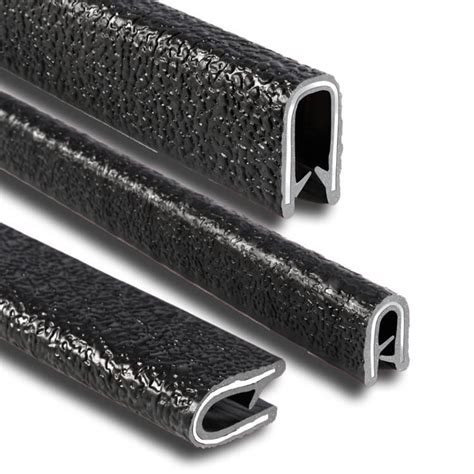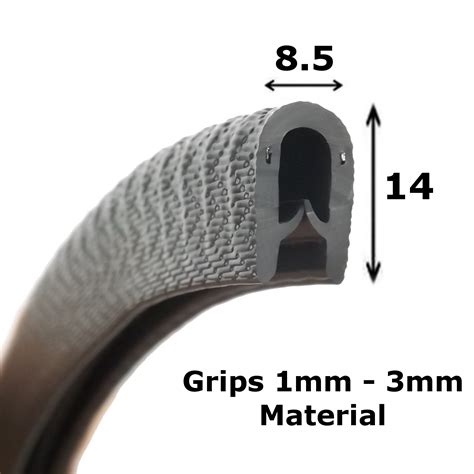edging process sheet metal Any type of steel can undergo slitting and edging, but not every metal is compatible with every type of edging. You may be limited in your choice of edging by steel grade, size, and width tolerance. For instance, some edges work better on harder grades of stainless steel, but the same edging could weaken or shred . See more A machines reference position or home position, as it is sometimes referred to, is the point at which all 3 axes read Zero. This is usually set as far as the machine can move in a positive direction in all 3 axes.
0 · sheet metal sharp edge protector
1 · sheet metal edge trim molding
2 · protective edging for sheet metal
3 · protective edging for metal
4 · flexible edging for sheet metal
5 · edge moulding for sharp metal
6 · edge molding for sheet metal
7 · edge guard for sheet metal
Solution – a thin profile downlight with a junction box. Sunco Lighting offers several dimmable, thin profile recessed lighting products that fit in narrow ceiling spaces, including our all-in-one Slims and Integrated Slims which only need a 2” clearance for the included junction box.

sheet metal sharp edge protector
Any type of steel can undergo slitting and edging, but not every metal is compatible with every type of edging. You may be limited in your choice of edging by steel grade, size, and width tolerance. For instance, some edges work better on harder grades of stainless steel, but the same edging could weaken or shred . See moreProper slitting and edge conditioning is important for three reasons: functionality, safety, and aesthetic. See moreA slit coil has countless practical applications. First, slitting allows you to buy metal stripcloser to the finished size of your product, which reduces waste and saves processing time. In addition, because slitting and edging produce more consistent and . See moreFor the safest and most efficient processing, your slit coil must be cut above the rest. Properly slitting and edging your stainless steel . See more
In this comprehensive overview, we will delve into key techniques employed in the process of sheet metal edging, with a particular focus on the application of bordering machines. Sheet metal edging involves shaping and finishing the . Smoothing sheet metal edges is an essential process to eliminate sharp, jagged edges that can pose safety hazards and impair the functionality and aesthetics of metal parts. Several methods can be employed to effectively .There are numerous types of edges, joints, seams, and notches used to join sheet-metal work. We will discuss those that are most often used. Edges are formed to enhance the appearance .
Stationary carbide knives or flat files for smoothing the edges are easy to incorporate into a low-speed operation. For sheet metal, support rolls are needed near the knives or files. Grinding uses driven side rolls (see Figure 4). . When it comes to achieving efficient metal edge finishing, having the right tools and materials is crucial. In this step-by-step edge rounding tutorial, we will provide an overview of the necessary tools and recommended . This short video demonstrates a time saving technique for dulling edges on sheet metal. There are numerous ways to smooth sharp edges, but we find this the easiest. This method finishes the top and bottom edges of the . Following are the 9 different types of sheet metal operations: It is cut in a straight line across a strip, sheet, or bar. It leaves a lean edge on the piece of metal that is sheared or cut. In this operation, a sheet metal .
Edge curling in sheet metals is the process of creating a raised rim or lip along the edge of a metal sheet. This can be done for a variety of reasons, such as to add stiffness and strength to the sheet, to provide a finished and . Deburring sheet metal edges is an essential step in achieving high-quality workmanship in metal fabrication. It involves removing the sharp, rough edges left after cutting, which not only enhances the appearance of the .That’s where edge conditioning, also known as edging, comes in. Edging is the process that smooths or rounds the sharp edges of slit metal to remove the burr and make it safer to handle and use in exposed applications. Conditioned edges are available in several shapes: deburred, square, round, rolled, beveled, and even custom edges.
In this comprehensive overview, we will delve into key techniques employed in the process of sheet metal edging, with a particular focus on the application of bordering machines. Sheet metal edging involves shaping and finishing the edges of metal sheets to meet specific requirements. Smoothing sheet metal edges is an essential process to eliminate sharp, jagged edges that can pose safety hazards and impair the functionality and aesthetics of metal parts. Several methods can be employed to effectively smooth sheet metal edges, each with its own suitability based on the material, size, shape, and desired finish of the component.
There are numerous types of edges, joints, seams, and notches used to join sheet-metal work. We will discuss those that are most often used. Edges are formed to enhance the appearance of the work, to strengthen the piece, and to eliminate the cutting hazard of the raw edge.
Stationary carbide knives or flat files for smoothing the edges are easy to incorporate into a low-speed operation. For sheet metal, support rolls are needed near the knives or files. Grinding uses driven side rolls (see Figure .

When it comes to achieving efficient metal edge finishing, having the right tools and materials is crucial. In this step-by-step edge rounding tutorial, we will provide an overview of the necessary tools and recommended materials to help you achieve excellent results.
This short video demonstrates a time saving technique for dulling edges on sheet metal. There are numerous ways to smooth sharp edges, but we find this the easiest. This method finishes the top and bottom edges of the sheet metal in one pass instead of smoothing each edge separately. Following are the 9 different types of sheet metal operations: It is cut in a straight line across a strip, sheet, or bar. It leaves a lean edge on the piece of metal that is sheared or cut. In this operation, a sheet metal workpiece is placed or kept between two dies from one end. Edge curling in sheet metals is the process of creating a raised rim or lip along the edge of a metal sheet. This can be done for a variety of reasons, such as to add stiffness and strength to the sheet, to provide a finished and decorative edge, or to facilitate assembly with other metal components. Deburring sheet metal edges is an essential step in achieving high-quality workmanship in metal fabrication. It involves removing the sharp, rough edges left after cutting, which not only enhances the appearance of the product but also ensures safety and functionality.
That’s where edge conditioning, also known as edging, comes in. Edging is the process that smooths or rounds the sharp edges of slit metal to remove the burr and make it safer to handle and use in exposed applications. Conditioned edges are available in several shapes: deburred, square, round, rolled, beveled, and even custom edges.
sheet metal edge trim molding
In this comprehensive overview, we will delve into key techniques employed in the process of sheet metal edging, with a particular focus on the application of bordering machines. Sheet metal edging involves shaping and finishing the edges of metal sheets to meet specific requirements. Smoothing sheet metal edges is an essential process to eliminate sharp, jagged edges that can pose safety hazards and impair the functionality and aesthetics of metal parts. Several methods can be employed to effectively smooth sheet metal edges, each with its own suitability based on the material, size, shape, and desired finish of the component.
There are numerous types of edges, joints, seams, and notches used to join sheet-metal work. We will discuss those that are most often used. Edges are formed to enhance the appearance of the work, to strengthen the piece, and to eliminate the cutting hazard of the raw edge. Stationary carbide knives or flat files for smoothing the edges are easy to incorporate into a low-speed operation. For sheet metal, support rolls are needed near the knives or files. Grinding uses driven side rolls (see Figure . When it comes to achieving efficient metal edge finishing, having the right tools and materials is crucial. In this step-by-step edge rounding tutorial, we will provide an overview of the necessary tools and recommended materials to help you achieve excellent results. This short video demonstrates a time saving technique for dulling edges on sheet metal. There are numerous ways to smooth sharp edges, but we find this the easiest. This method finishes the top and bottom edges of the sheet metal in one pass instead of smoothing each edge separately.
Following are the 9 different types of sheet metal operations: It is cut in a straight line across a strip, sheet, or bar. It leaves a lean edge on the piece of metal that is sheared or cut. In this operation, a sheet metal workpiece is placed or kept between two dies from one end. Edge curling in sheet metals is the process of creating a raised rim or lip along the edge of a metal sheet. This can be done for a variety of reasons, such as to add stiffness and strength to the sheet, to provide a finished and decorative edge, or to facilitate assembly with other metal components.

stainless steel cat litter box with rim
Gold thread can be infused into fabric through various techniques, including brocading during the weaving process, surface embroidery using stitches like satin or chain stitch, and traditional methods like zari work, where .
edging process sheet metal|protective edging for sheet metal